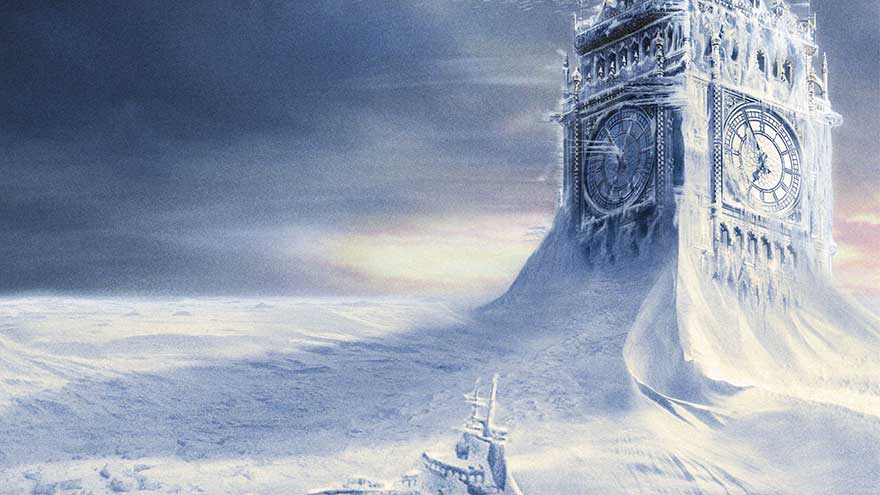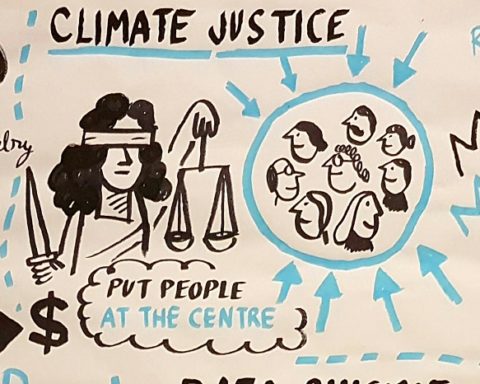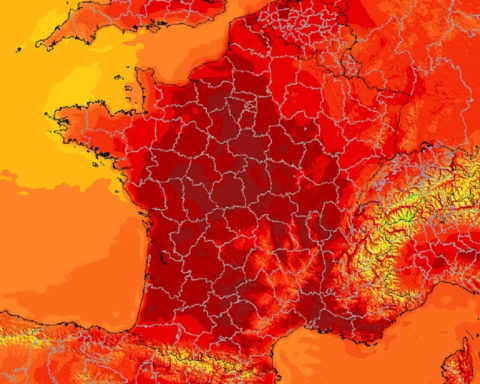It sounds like a bad joke the way Donald Trump is starting to get used to. Global warming is going to lead us into an ice age! This statement is no joke. It is a hypothesis that was already considered some 15 years ago and is coming back to the forefront with more precise data published by the CNRS and the University of Southampton in the eminent journal Nature Communications. Global warming is disrupting the circulation of ocean currents, particularly the Gulf Stream, which would bring us, in a probability of 50 %, towards an era of brutal cooling impacting the northern hemisphere within a few decades.
Ahe title of the CNRS press release could not be clearer: " North Atlantic: the risk of rapid cooling in the 21st century revised upwards ». From the dawn of the 2000s, the hypothesis that global warming will lead to the relatively abrupt emergence of a period of glaciation was the subject of numerous studies and more or less alarmist reports. Hollywood even took up the theme by releasing a successful disaster movie: "The Day After" by Joseph Emmerich (2002). The hypothesis of a brutal cooling of the northern hemisphere is based on the modification of the thermohaline circulation of the ocean current in the North Atlantic. The influx of freshwater from melting sea ice, flooding of the major rivers of northern Europe and increased precipitation would be the main factors in a break in the ocean circulation; if this threshold is reached, apocalyptic global consequences would ensue.
Since that time, scientists have devoted considerable resources to the analysis of climate change in general and the circulation of ocean currents in particular. Among these, the Gulf Stream is the driving force behind the temperate climates of the northern hemisphere. It acts as a gigantic "conveyor belt" that carries the warm waters of Florida to the Arctic, via the coasts of Europe, where it guarantees a temperate climate. Arriving towards the polar cold, the ocean current flows in the opposite direction but, as its waters become colder, it plunges towards the seabed. The warm water going northwards is closer to the surface, while the cold water returning from the pole is in the lower layers of the current. This is what scientists call the overturning ocean circulation. It is the engine of the Gulf Stream. If the engine is no longer working properly, the entire ocean circulation will be disrupted and, as a result, the entire climate of the regions concerned.
The IPCC, on the basis of a long series of measures and some 40 climate projections, had estimated in 2013 that this slowdown would take place gradually and over a long time scale. A rapid cooling of the North Atlantic during the 21st century therefore seemed unlikely. However, within the framework of the European project EMBRACEA team of oceanographers has re-examined these 40 climate projections by focusing on a key point in the northwestern North Atlantic: the Labrador Sea. Located southwest of Greenland, this sea is a major seat of convection in the Atlantic Ocean. Giovanni Sgubin, one of the co-authors of the study published by Nature explained the phenomenon: during the winter, when atmospheric temperatures are very cold, surface water, already relatively salty and therefore dense, cools down. This cooling further increases their density and they end up falling to the depths. The surface and bottom waters, which are warmer, then mix. All of this ultimately leads to a transfer of heat to the surface. Climate change will change two things choses : Firstly, the temperature will rise significantly. Above all, however, the surface water will become less salty as a result of increased precipitation in this region. This will reduce its density. After a certain threshold, it will no longer sink to the bottom, and heat transfer will no longer take place.
Choosing to study this convection phenomenon in detail, the researchers developed an algorithm capable of identifying rapid variations in ocean surface temperatures. This "statistical mill" revealed that seven of the forty climate models studied projected a complete cessation of convection, causing abrupt cooling of the Labrador Sea, leading to sharp drops in temperatures in coastal regions of the North Atlantic. The results of this new study raise the probability of rapid cooling of the North Atlantic during the 21st century to nearly 50 %.
But is such rapid cooling, simulated only by a few models, likely? To answer this question, the researchers looked at the key variable in triggering winter convection: ocean stratification. These vertical variations in the density of water masses are well reproduced in eleven of the forty models. The CNRS press release states that among these eleven models, which can be considered the most reliable, five simulate a rapid drop in North Atlantic temperatures, i.e. 45 %!

Schematic representation of the circulation in the Labrador Sea, in the heart of the subpolar gyre schematized by the red contour. Giovanni Sgubin - EPOC

Example of rapid cooling in the gyre predicted by one of the climate projections. Left: temporal evolution of the sea surface temperature. Right: difference in sea surface air temperature between the beginning and the end of the 21st century © Giovanni Sgubin - EPOC
The authors of the study state that these results, derived from climate models, will be compared with future data from the international project OSNAP which foresees the installation of fixed buoys in the subpolar gyre, this gigantic oceanic water eddy formed by a set of marine currents and caused by the Coriolis force, in order to anticipate possible rapid cooling in the years to come. Scientists warn that this risk should be taken into account in policies to adapt to climate change in the regions bordering the North Atlantic.
So we who thought we'd be wearing Bermuda shorts, flip-flops and sunglasses to face the years to come, will we have to change our wardrobe to go with down jackets, duvets and big duvets?













